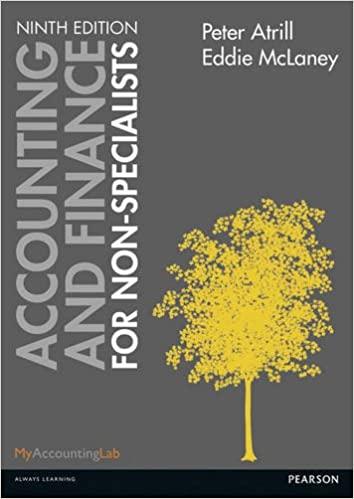Question 1 -Interest & loan Sue will need $120,000 to refurbish her house at the corner of a main road into a cake shop in 5 years. She has a saving account which carn 3.47 % p.a. compounding quarterly and she is able to deposit $800 into that account at the end of each month for 5 years. a) Will Sue have enough money after 5 years? If not, how much is in short? Show all calculations. (4 marks) b) Even if Sue may not have enough money, she will consider taking a 9-year loan for the required amount because she is keen to have her own business. She talked to the lenders from her local Bank and Credit Union regarding loan options (i) repayments. Calculate the minimum biannually repayment for both principal and interes: that Sue would have to make on this loan. If you wish, use EXCEL to calculate the biannually repayment. (4 marks) The local bank charges 4.35% per year compounding biannually and requires biannually EXCEL Instructions: Refer to Topic 4 in the EXCEL bookilet for instructions on how to use financial functions to make annuity calculations. You need to show formulas used, do not simply type in values Therefore, you need to show the formulas in your spreadsheet in this form B4=B3*$C$1 Use EXCEL to set up an Amortisation Schedule for the loan. Include your completed EXCEL (ii) amortisation schedule. The schedule should include the amount of principal and the amount of interest that comprise each payment until the loan is paid off at the end of its term. (7 marks) EXCEL Instructions: Refer to your amortisation notes from Week 3 and the corresponding EXCEL spreadsheet available on the course website, which you can modify to help you create the amortisation schedule for this question. Be sure to add rour initials to all column names An example for the EXCEL file configurations is provided below. Failure to meet this requirement will result in a penalty (marks deduction). List all variables provided Amount borowed 2 Interest due per month 3 Loan term (months) $5,000.00 $15.00 12 Monthly repayment can be find using EXCEL function: PMT 4 Tetal interest charges S Monthly repayment S900.00 $49167 6 APR 1000% 7 MK is the initial, use your own not mine Month MK Payment MK 1 S PV MK 8(15856/12)-A9) 491.67 487.60 483.57 810-5856/12)-A30) 10 2 491.67 11 3 S 491.67 12 4 S 491.67 Show EXCEL formula used Sass 13 491.67 for the calculations. This is an 491.67 14 EXCEL versicn of the formula SBSS 7 S 491.67 15 P=Mx(1+i 16 491.67 17 491.67 491.67 491.67 10 S 11 S 18 19 20 12 491.67 Total 5,592.47 21 SUMICc0) 22 Figure 1 Determination of APR Hint: When you prepare the amortisation schedule, do not round the calculation results to the nearest cent. Otherwise the Outstanding Balance may not balance to 0 at the end of the term. You should use the format cells' in EXCEL to change the appearance of a number without changing the number itself. 2 (iii Use your amortisation schedule from part (ii) to calculate the total interest and the total amount paid over the life of the loan. (2 marks) c) The Credit Union charges Sue 3.95 % p.a. compounding monthly and requires monthly repayments. Also, The Credit Union offers a two-year interest-only option with the 9-year loan. This means that for the first two- years, every month Sue would pay only interest on the amount borrowed. Loan repayments consisting of both interest and principal would then commence in year three and continue for 7 years. (i) to pay off the loan in 9 years. If you wish, use EXCEL to calculate the monthly repayment. EXCEL Instructions: Refer to your own notes taken in class and Topic 4 in the EXCEL booklet for instructions on how to use financial functions to make annuity calculations. (4 marks) Calculate the monthly repayment that Sue would have to make starting in year three if she wants (i Calculate the total interest paid on the loan with the two-year interest-only option. (3 marks) d) Which option should Sue take? As part of your response you must explain why the option you select is the better of the two alternatives. (2 marks) Note: In order to achieve fll marks for this question it is essential that you fully explain what you are doing. why you are doing it and the steps involved in providing a final solution. Ensure your answer is not just a set of calculations as 25% of the marks for this question are set aside for your explanation and presentation








